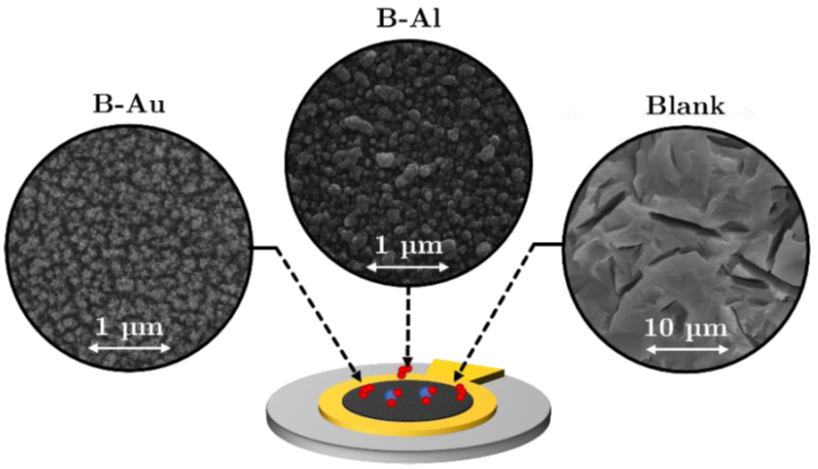Séminaire - 15/12/2022 - Premsyl Fitl & Martin Hruska - University of Chemistry and Technology, Czech Republic
Invitation : Lionel Patrone (Département PHANO, Equipe Nano).
Diffusion : IM2NP, CINaM, Irphe, LP3 (via N. Sannier), Madirel (via R. Denoyel), PIIM (via T. Angot), CPT (T. Martin), Fédération de Chimie (via S. Viel), CP2M
SEMINAIRE Jeudi 15 Décembre 2022 à 11h00
Salle des séminaires de l'Im2np, campus de Saint-Jérôme, 1er étage Bâtiment Poincaré
Double séminaire :
1) Přemysl FITL
University of Chemistry and Technology, Technicka 5, CZ16628 Prague 6, Czech Republic
Chemiresistors for the detection of environmental pollutants and toxic gases
One group of widely used gas sensors are chemiresistors. These sensors work on the principle of a change in conductivity caused by the interaction of the active substance with an analyte present in the air. The used active substances are based on inorganic and organic semiconductors. Inorganic semiconductors in the form of thin films must be used at elevated operating temperatures of 100-400°C. In the case of inorganic semiconductors, it is possible to reduce their operating temperature by suitable nanostructuring or by forming composite layers consisting of semiconductor heterojunctions. Organic semiconductor layers usually operate at room temperature, but slow desorption of the analyte is a problem. Here, we proved advantageous use of irradiation of active layer with a suitable wavelength of light to intensify desorption of analyte.
Our team has developed chemiresistors capable of reliably and reproducibly detect pollutants and toxic gasses (e.g. (CN)2, CNCl2, O3, NOx). The active layers are prepared by vacuum evaporation in the case of organic semiconductors, pulsed laser deposition in the case of inorganic semiconductors, hydrothermal growth in case of nanostructured films and by drop coating in case of polymeric ionic liquids. For detection we use materials from the range of phthalocyanines, porphyrins, oxides of: indium,tin, copper, zinc; with suitable catalytic dopants. These materials are deposited on the KBS-4 sensor substrate developed and patented by our department and company Tesla Blatná.
2) Martin HruŠka
University of Chemistry and Technology, Technicka 5, CZ16628 Prague 6, Czech Republic
Nanostructured Materials for Gas Sensor Applications
Nanostructured films are highly promising materials for chemical gas sensor applications because of their fractal surface structure and high surface-to-volume ratio. Such films can be prepared by PVD methods, especially by thermal evaporation or magnetron sputtering, while their physical properties (electrical resistance, surface morphology, porosity, layer thickness) can be tuned by deposition conditions (used inert gas, working pressure, temperature). Nanostructured black metal layers were deposited by thermal evaporation from a tungsten boat in an inert atmosphere (He, Ar, N2) at an elevated pressure of 100 – 1000 Pa on quartz crystal microbalance (QCM) and chemiresistor substrates. The sensing characteristics of prepared QCM sensors and chemiresistors were investigated. It was proven that nanostructured metals can provide more bonding sites for analytes and hence increase the response of QCM sensors. It was also observed that nanostructured metal layers exhibit electrical resistance than solid films and are therefore suitable as active layers for chemiresistors.

Figure 1: Illustration of a QCM sensor with different nanostructured black metal coatings (black aluminium, black gold).
1. M. Hruška et al., Surface Enhancement Using Black Coatings for Sensor Applications, Nanomater. 2022, Vol. 12, Page 4297, vol. 12, no. 23, p. 4297, Dec. 2022, doi: 10.3390/NANO12234297.
2. P. Pokorný et al., Surface processes on thin layers of black aluminum in ultra-high vacuum, Vacuum, vol. 205, p. 111377, Nov. 2022, doi: 10.1016/j.vacuum.2022.111377.
3. M. Hruška et al., QCM Sensors Combining Highly Nanostructured Metal-Blacks Sublayers and Active Self-Assembled Monolayers, ECS Meet. Abstr., vol. MA2020-01, no. 31, pp. 2314–2314, May 2020, doi: 10.1149/MA2020-01312314mtgabs.

